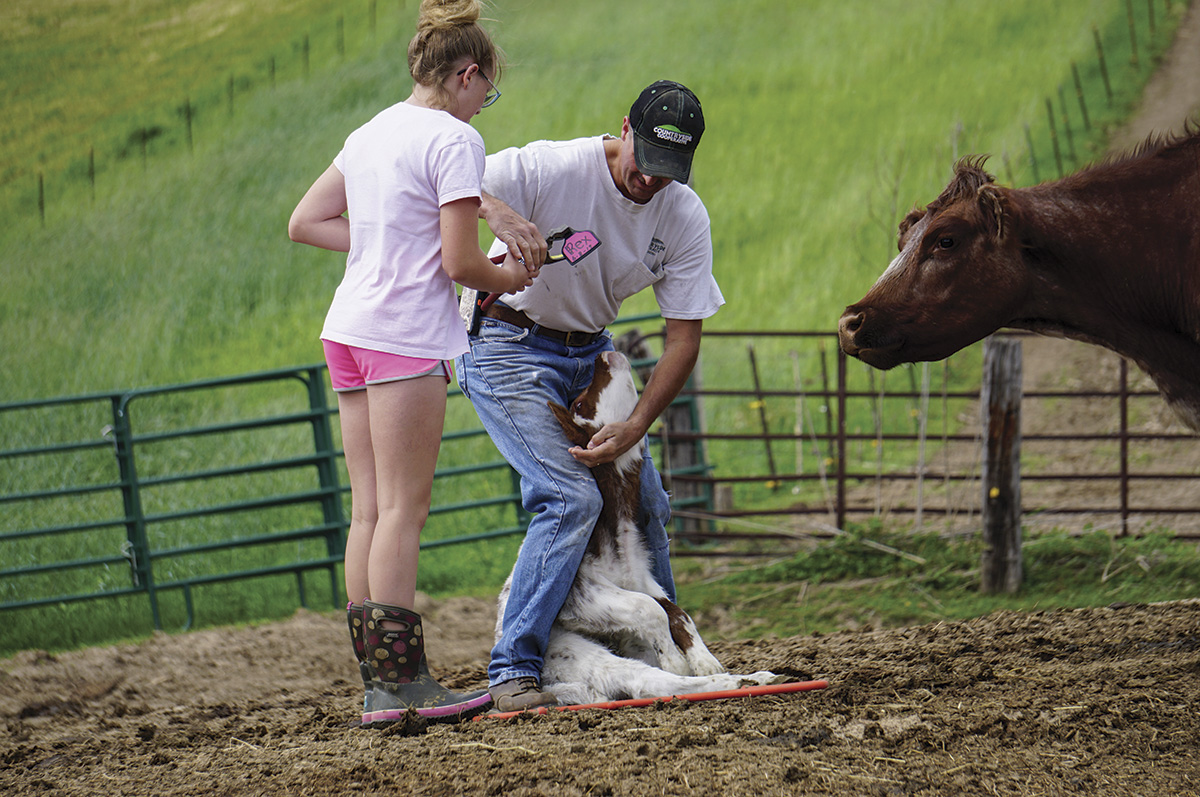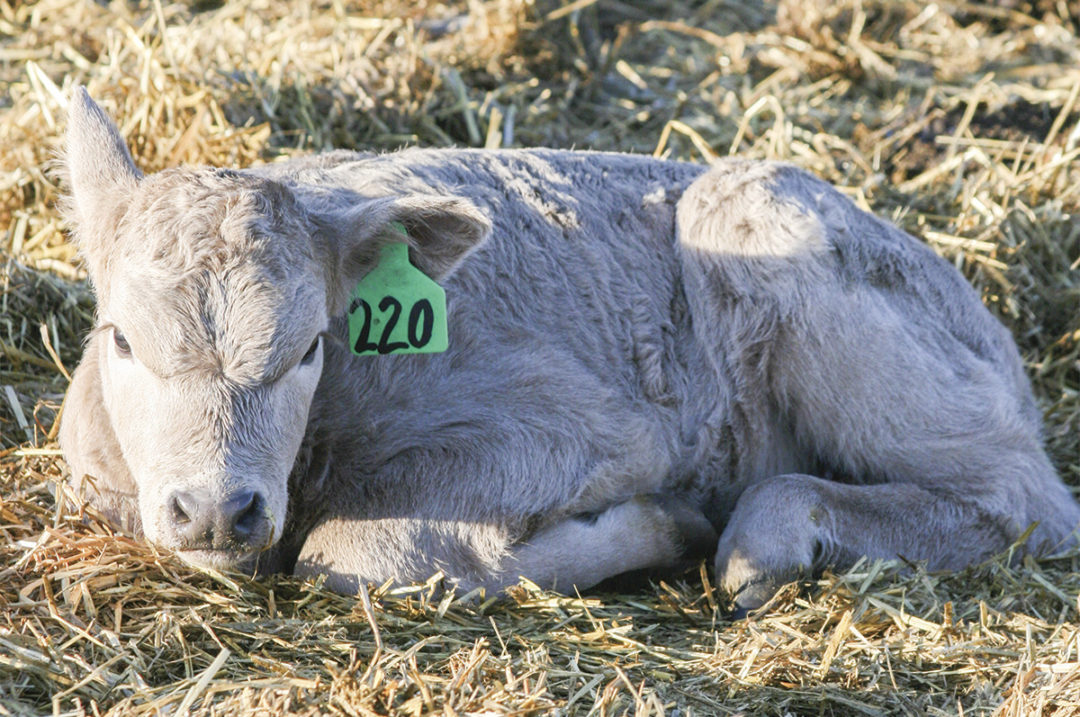Calving season is an ongoing process that can occur over a few months, rather than a single short-term event such as pregnancy checking or weaning. Recording calving records provides great benefits and opportunities to collect data and details which can then be used to evaluate and rank cows in the herd. Whether you have five cows or 500 or more, tracking calving and calf details is a valuable way to have the insights and details you need to make the decisions that are important to your herd and ranch.
Numbering system for newborn calves
Ideally, eartags are applied soon after a calf is born. This is a good way to identify calves so you and others can easily refer to a certain calf tag if additional assistance or checks are needed. The Beef Improvement Federation (BIF) recommends using year letters to identify the year the calf was born. Each year has a different letter. Last year (2023) was L. This year (2024) is M. The year 2025 is N, and so on. The letters I, O, Q and V are not used in the year letter codes.
You could include the dam ID with the calf tag. For example, cow 100 has a calf this year. The calf tag could be 100M, or have the letter first, so M100. Her calf next year would be 100N (or N100). This is a great way to visually link the dam and calf together without causing duplicating tag numbers.
Another option is to number the calf in the order that it is born that year. For example, the first calf of this year could be M001, the second calf would be M002, and so on.
In addition, some producers use various color eartags to indicate male or female, different owners, etc. Some producers use the same tag color year after year to maintain consistency in the herd.
Regardless of your numbering system, it’s important to tag calves as soon as possible.

Photo by Abigail George.
Timely data collection
When calves are born, it’s important to record their details as quickly and completely as possible. Entering the details in a central location will help, instead of needing to look through many pieces of paper to put together a calf’s record.
Key calving data includes the date of birth, sex and dam. A birthweight is also helpful to record, as this is a key production measurement for both the calf and the cow.
Registered or seedstock producers need to record additional details, such as calving ease and color markings, to submit calf registration and cow production records to their breed association. These measures help the associations to generate EPDs, which is a way to compare animals within the breed for their genetic potential for certain traits.
Comparing calves within the herd
Another benefit of tracking calves is to be able to compare their growth with others born in the same calving season. While visual appearance and correctness are important factors, genetic and performance measures also influence how a calf grows and matures. The birthweight of the calf helps determine an adjusted birthweight, another measure provided by BIF, which is a way to compare birthweights while factoring in the dam’s age.
Production history for females
Another key benefit of tracking records at calving is to view each cow’s production history quickly and easily. It’s much easier to view all of a cow’s calving records in one place rather than trying to remember each year about a cow’s current or previous calf. In addition, having the details in one place makes analysis and decision-making much easier. Also, these histories can be shared with others who help with making decisions.
Calving time on the ranch is exciting and a way to grow the herd. This time also provides opportunities for insights and tracking all of the details that make a difference in your herd now and to help your long-term goals.









